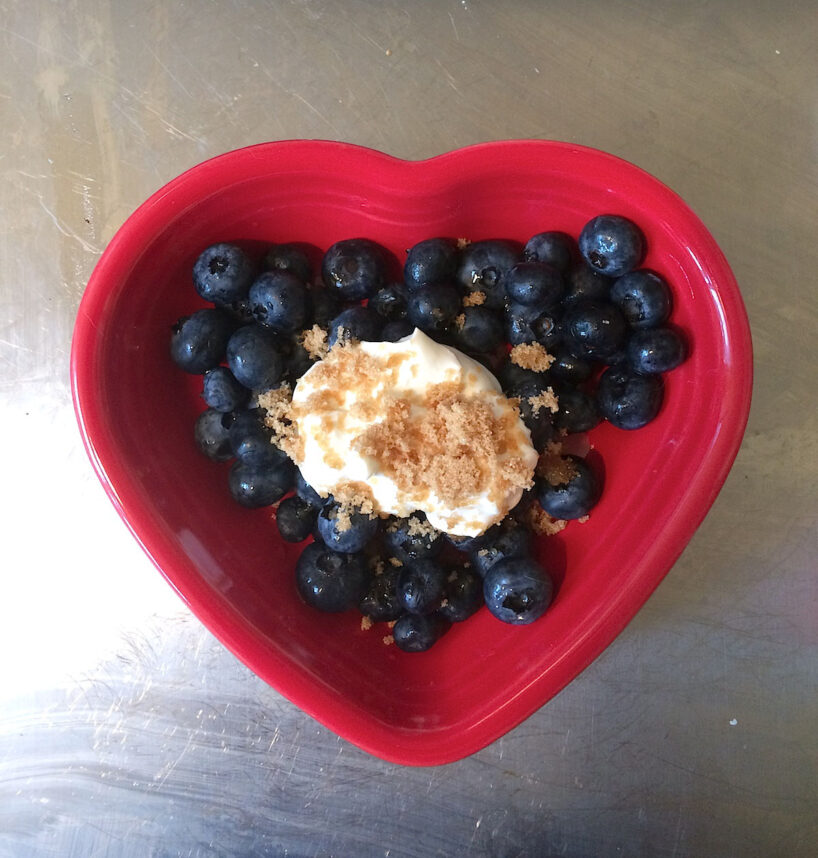“I’ve always said that my favorite recipes are any that someone else has made for me,” food writer Amy Rogers told the Journal. “I’m a passionate appreciator of food, but at the end of the day, it all comes down to simple things.”
Though Rogers enjoys fine dining just like the next person, she says her fondest memories and most satisfying dining experiences involve the foods she grew up with, like roast chicken and noodle kugel — and she can still make amazing matzo balls!
“I watched my mother and grandmother bake matzo balls countless times,” she says. “There were no secrets, just patience, chilling the dough, making sure the matzo balls were all the same size.”
If they start to rise and aren’t all the same size, some will cook faster than others, she explained. If you cook them for too long, they’ll fall apart. If you cook them for too little time, they’ll be soft on the outside but raw on the inside.
“Roll small matzo balls into walnut-sized balls and place them in the boiling water as close together as possible at the same time so they cook at the same rate.”
Rogers’ earliest memories involve cooking and gathering around food with her family, including holiday meals and weekend bagel and lox brunches.
As a writer, it was inevitable that her passion for food and storytelling would meet, she explained.
“I had been working as a journalist for quite some time, and then I sat down one day and realised that food was coming up quite often in my articles,” she said.
For example, she wrote about what it’s like to raise a family on minimum wage. The biggest challenge for the families she featured was providing enough good, healthy, and appealing food. Rogers also started a business that had nothing to do with food, but ended up talking about food. For example, she featured a family that emigrated from Serbia to the United States to seek medical care for their children, and eventually opened a bakery.
As she began to embrace that perspective, the label food writer began to take hold.
“I always tell people I’m not a chef or a great cook, I’m just someone who appreciates good food,” she said.
During the pandemic, when everyone was trying to make do with what was in their pantry, Rogers discovered the one ingredient that makes everything taste good: Everything Bagel Seasoning.
“A lot of Jewish food, whether it’s European, Middle Eastern or American based, has garlic, onion, salt, pepper and sometimes sesame seeds in it,” says Rogers, who creates his own unique combinations.
Of course it’s great on bagels, but you can also spread it on toast with butter, on pasta, on beans, on anything, etc. Mix oil and vinegar together to make a salad dressing.
“I’ve tried it with a little bit of paprika on chicken and as a bagel seasoning, and it’s been a big hit,” she says. “It comes in all sorts of flavors, and it’s my favorite all-purpose seasoning.”
Rogers, who also teaches workshops on “How to Write a Recipe,” said recipes can be as simple or as complex as you want them to be.
“Most people have someone in their family who made the best pie or made the best thing, even if they didn’t write it down,” she says, “so there’s already a process within our families, within our faith communities, within our ethnic communities, of passing on stories from generation to generation.”
When writing about food, a great place to start is, “My favorite food as a child was…” or “I remember my family making this.”
“Those little snapshot memories can be so meaningful,” she says. “You don’t have to go out and taste fine wines or study restaurant cuisine to get serious about writing about food from a storytelling perspective.”
Here’s how Rogers writes the recipe:
For more information, visit AmyRogers.net.
Listen to the full conversation in the podcast:
Recipe from Amy Rogers’ “How to Write a Recipe”
A recipe is more than just a list of ingredients. The best recipes convey the delicious details that make the dish special. Recipes are a great way to preserve and pass on traditions. Perfect for family historians, genealogy enthusiasts, and home cooks. No experience necessary.
To write a recipe you need:
– That’s a funny title. Instead of “Blueberry Compote,” I’ll make “Elaine’s Best Blueberry Dessert.”
– Details about why it is good, who made it, and when (these are called head notes).
– A list of ingredients and their quantities.
– Equipment list.
– Cooking, cooling, etc. steps and times
– How it is served and stored.
– How many servings will it serve?
for example:
“Elaine’s Best Blueberry Dessert”

Growing up, every summer my mother would prepare a rich, yet simple dessert that remains one of my favorites. I can still see her standing in the kitchen of our Long Island home, dressed for the summer: white slacks, a sleeveless blouse, and sunglasses perched atop her head, where she’d left them after shopping at the local farmer’s market.
1 pint blueberries, washed, drained and chilled
1 small container of sour cream
1 or more handfuls of brown sugar
Place the blueberries in a clean glass bowl or divide them between two bowls. Drizzle the sour cream on top and sprinkle generously with brown sugar. Serve immediately.
It’s enough for two people, one for a mother and one for a daughter.
Debra Eckerling A writer for the Jewish Journal,Come taste your taste buds with Deb.” subscribe upon Youtube Or your favorite podcast platform. Email Debra at tastebuds@jewishjournal.com.

